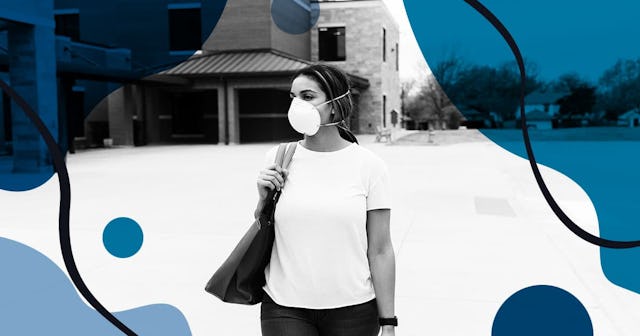The Critical Point That Parents Seem To Be Missing When Pushing For In-Person School

My wife teaches classes at our children’s school, and with each week getting closer to September, we have had a lot of conversations about keeping her and our children safe when classes resume. That is, if they resume. We live in Oregon, and right now, as I write this sentence, the plan is for schools to be open and running in the fall, and like all parents, Mel and I have our anxieties.
Naturally, we want schools to be open. Last spring, working from home, while educating our children, was stressful to say the least. I don’t know if I’ve ever stress eaten so much ice cream in such a short span of time. Like many parents, regardless of the hassle of at-home learning, I’m not interested in sending my children to school if it can’t happen safely. But my sentiment is not held by everyone.
Last Sunday during an interview with Fox News, Education Secretary Betsy DeVos said, “There’s nothing in the data that suggests that kids being in school is in any way dangerous,” a statement that I’ve heard in various other capacities from parents pushing for schools to open so society can begin humming along like it did before the pandemic. According to Johns Hopkins Medicine, there is truth to the statement that children are less likely to contract COVID-19. And when they do contract the virus, they are more likely to have mild symptoms.
izusek/Getty
But what isn’t being taken into account is that children are not the only humans being placed at risk of infection when schools open. According to a recent study released by the Kaiser Family Foundation, nearly 1.5 million teachers in the US are at higher risk of serious illness if they contract coronavirus. These teachers and instructors, about 24% of the total, suffer from health conditions such as diabetes, heart disease or obesity, or are older than age 65, which makes them more vulnerable.
There is also the risk of an infected child bringing the virus home to a loved one that is at higher risk. Yes, children often experience mild cases of COVID in comparison to adults. However, a child infected in school could very easily bring the virus home, where someone might be at a higher risk of serious symptoms or even death. And we are already seeing this narrative play out, as people inadvertently infect their entire families from exposure to one (often-asymptomatic) person.
I am confident you have heard similar stories, and the sad reality is, if we rush to open schools without taking proper precautions, we are going to see more of them.
I will be the first to say that America won’t be the same until we can open schools. Too many parents rely on schools for child care. Too many children rely on school for affordable meals, social engagement, and mental health counseling. But we cannot open schools at the risk of our kids and the teachers that they depend on. And we cannot put our families in life-threatening danger to benefit the economy.
Drazen_/Getty
Naturally, there is the argument that schools could open in the fall in areas with low infection rates, as long as social distancing is maintained, areas are disinfected properly, and masks are worn by teachers and students. And yes, there is data to back this up. A recent commentary published in American Academy of Pediatrics concluded that children infrequently transmit COVID-19 to each other or to adults and that many schools, provided they follow appropriate social distancing guidelines and take into account rates of transmission in their community, could reopen safely in the fall. This commentary looked at a mass of data from China, France, and New South Wales to conclude its findings.
But that doesn’t account for the massive amount of funding that would be needed to shrink class sizes so that children could be socially distanced in most classrooms, along with the cost of disinfecting chemicals, masks for faculty and students, extra aides in schools and on buses to provide health screenings, and labor required to train teachers on how to instruct while also keeping children safe from infection. I mean, honestly, my wife and I once crunched the numbers, and we spend close to 10% of Mel’s teaching income on school supplies for her own classroom.
Where is all this funding going to come from? Certainly not the current administration, who is stingy enough with funding for education on a non-pandemic day.
The reality is, when you look at all factors, the risk of opening schools is high — and that risk extends far beyond the children in the classroom. Unless there is much more funding allocated to schools to open safely, and the rates of infection begin to go down across the United States, this high risk to family, teachers, and children will continue.
This article was originally published on